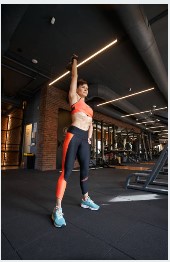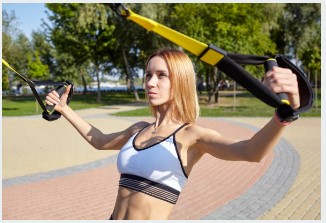
When it comes to sculpting your shoulders at the gym, you’re likely familiar with the classics: dumbbell military presses, lateral raises, and perhaps even barbell overhead presses and behind-the-neck presses.
However, solely relying on heavy overhead lifts might eventually lead to joint issues over time. It’s crucial to recognize that shoulder joint health doesn’t always directly correlate with strength. Distinguishing between exercises for shoulder strength and exercises for shoulder health is imperative.
The shoulder is a complex mechanism that spans from the midline of your body to the extremities of your arms. Any arm movement engages the shoulders in some capacity. Many gym exercises, such as bench presses and bent-over rows, involve shoulder recruitment.
According to MH Advisory Board member David Otey, C.S.C.S., “The key to gaining strength lies in having healthy shoulders. Properly moving the arm with shoulder rhythm is essential to ensure not only muscle strength but also the overall health of the joint.”
To fortify shoulder strength, it’s essential to focus on correct movement patterns that maintain joint health before adding resistance. In this guide, Otey and Men’s Health fitness director Ebenezer Samuel, C.S.C.S., present five exercises to incorporate into your shoulder routine for improved shoulder health, ultimately paving the way for greater gains.
Master Your Shoulder Health with These 5 Crucial Exercises
Dynamic Front Rack Carry
Optimal shoulder health requires mastery over your shoulder blade’s movements. Carrying weights involves a fluid walking motion that can easily distract from proper technique. To perform this exercise effectively, maintain continuous awareness of your shoulder blade squeeze throughout the movement, supporting the weight in the front rack position.
While kettlebells are ideal, dumbbells can be used as an alternative. Once the weights are racked, ensure your forearms are perpendicular to the ground, and retract your shoulder blades to prevent strain on your back. Engage your core muscles for stability. Samuel emphasizes that this exercise teaches excellent torso positioning, contributing to long-term shoulder health.
Controlled Arm Bar
Stability is a cornerstone of healthy shoulders. The arm bar exercise emphasizes dynamic stabilization of the joint while allowing comfortable movement.
Otey explains, “The arm bar involves a static weight, while your body moves around it, making it an excellent drill for shoulder health.” This exercise aids in dynamically stabilizing the shoulder joint and fostering comfort in movement.
Focus less on the weight and more on keeping your arm steady while moving your body around it. This exercise can also serve as a warm-up before shoulder or upper body workouts.
Supported Chest Row
Maintaining shoulder health necessitates a strong back. Back muscles play a pivotal role in retracting the shoulders. The chest-supported row strengthens the mid-back and rear deltoids. By eliminating momentum, this exercise hones in on back muscle engagement. Don’t shy away from using heavier weights, as the supported chest position reduces the need for spine stability.
Eccentric-Emphasized Overhead Press

The overhead press is a fundamental shoulder exercise, yet the descent phase often poses challenges in maintaining proper elbow alignment. Instead of focusing solely on shoulder positioning, prioritize what feels most natural for your body. Slowing down the lowering portion of the exercise allows you to understand the optimal elbow position relative to your body.
Take three to four seconds to lower the weight, engaging your core and glutes for proper spinal alignment. Be cautious not to overload the weight during this controlled movement.
Dual-Action Face Pull

Two critical movements for shoulder health are external rotation (outward hand rotation) and scapular retraction (drawing shoulder blades together). The face pull effectively combines these actions.
Integrate this exercise as a warm-up for upper body sessions to activate the shoulders and mid-back. During the pull, visualize your hands forming goalposts at the peak of the movement. As emphasized by Samuel, use lighter weights to focus on activation rather than muscle building.